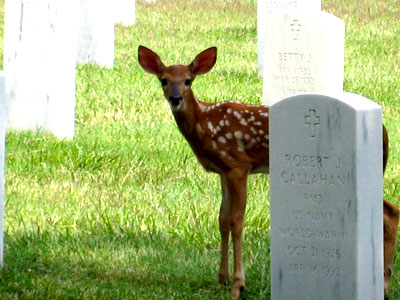
We'd run out of space at the war cemetery and we needed to make room for new plots. We were hungry for virgin earth. The war cemetery is bracketed by the interstate to the south and west, while being bordered to the east by the river. So those in charge made the difficult but proper decision to raze the groves along the southern edge of the state-run forest reserve to the north, a centuries-old mixed hardwood pioneer forest, rich in fauna and teeming with native wildlife, the earthy floor of which is known to be carpeted by arrowheads, bison jaws, glass beads and pottery. As expected, when the bulldozers rumbled in, a number of archeological artifacts were upturned along with the earth and trees. One of the more remarkable discoveries was the foundation of a slave cottage. What was left of its masonry was carefully photographed and cataloged by the local historical society, before being broken into thirds and stored in a basement archive.
Anyone could have predicted what would happen next, but no one here thought to take any preventative measures. Our war cemetery is now overrun by rabbits, snakes, moles, field mice, opossums, shrews, beetles of every size and variety, foxes, and squirrels, all former occupants of the forest reserve. Worst of all have been the deer, afflicted as they are by Chronic Wasting Disease, wholly inedible and aggressive by nature. Grieving families have been advised to arm themselves against possible attack. Culling is now scheduled prior to all national holidays. The groundskeeper has a mess on his hands and someone needs to be held accountable.



No comments:
Post a Comment